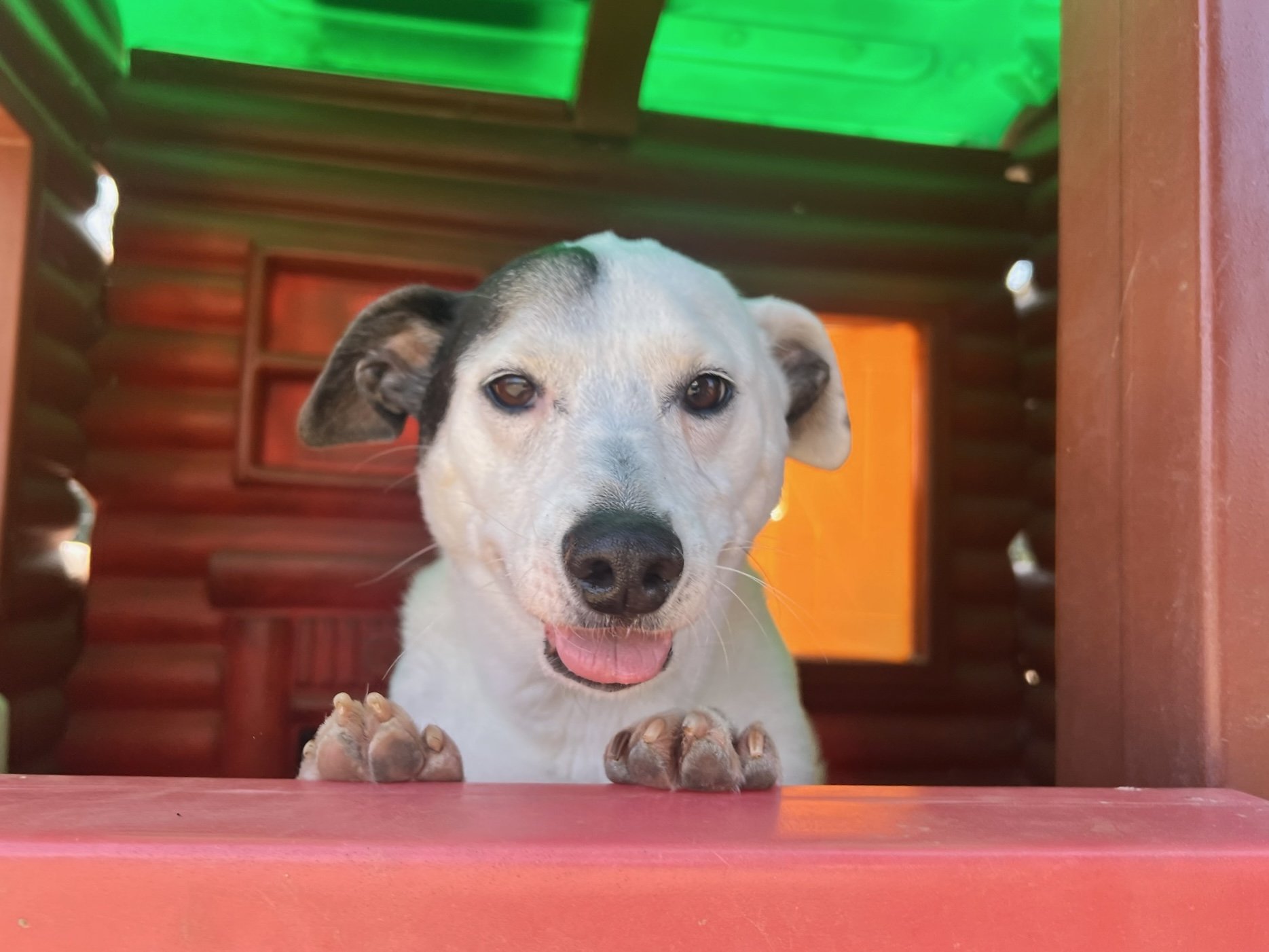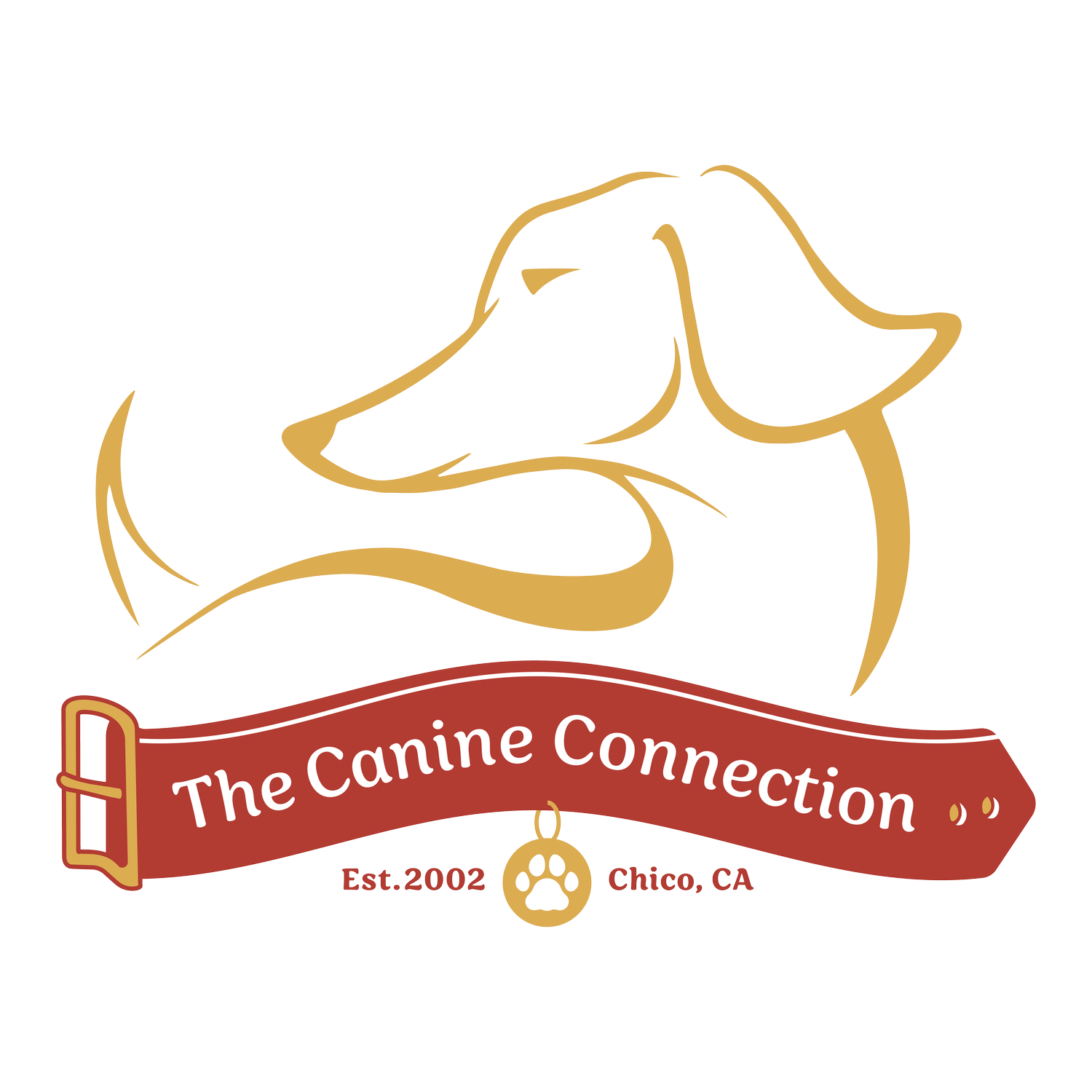
Understanding and Overcoming
Fear, Anxiety and Aggression
Behavior Services
When our dogs experience fear, anxiety, or aggression, they need our support. There is rarely a “quick fix” for these conditions but with a comprehensive program of behavior modification, our dogs can become more comfortable and competent with their world. We take a holistic approach to helping dogs that includes considering their health to rule out underlying problems, identifying better ways to manage their environments, and training to create new, positive associations and behaviors. Our Behavior Services are directed by Sarah Richardson, founder and owner of The Canine Connection, LLC.
Your Dog’s Behavior Program
Our work with people and their dogs begins with a 30-minute initial consultation, conducted via Zoom or phone. The purpose of this initial consultation is to gather more information about your dog’s behavior and environment so we can recommend the best approach for proceeding with a behavior program for your dog. Your dog’s program may involve any or all of the following: a comprehensive in-person behavior consultation, assessment of your dog’s responses to triggers, ongoing private behavior lessons or participation in our small-group classes. Depending on your dog’s behavior and the factors contributing to it, we may recommend meeting at our center, your home, or at other locations. We may also recommend a combination of Zoom or phone meetings, in-person meetings, and video review. For those not in the Chico, California area, services can be provided virtually using Zoom. Each dog and home is unique and we customize your dog’s behavior program to reflect your situation and goals.
30-minute Zoom or Phone Consultation - $75
Full Consultation - $250 (approximately 1.5 hours)
Follow-up Behavior Lesson - $150 (approximately an hour)
Understanding Fear, Anxiety and Aggression
Fear, Anxiety, and Aggression:
What’s the Difference?
Fear is an emotional response elicited by a specific external trigger. For example, your dog may have a fear of strangers but be comfortable with people he or she knows. It is not until the trigger is presented that your dog feels stress. Anxiety is a general feeling of unease associated with apprehension. Dogs that are anxious are generally triggered by the possibility of something unpleasant occurring. Some dogs live in a state of generalized anxiety much of the time while for others, the anxiety is associated with a specific event, such as separation. Aggression is a behavioral response to a perceived threat. Aggressive behaviors fall along a continuum from warnings to contact and bites. These behaviors are symptoms of an underlying state of discomfort and stress.
Intervention and Prevention are Key!
If your dog displays signs of fear or anxiety or behaves aggressively, the time to seek help is now. Schedule an appointment with a certified behavior specialist who is knowledgable about current science-based approaches to behavior change (scroll down to see our trusted colleagues in Northern California). If there is a possibility that pain or discomfort is an underlying cause, please visit your veterinarian. And, starting immediately, manage your dog’s environment to prevent those things that trigger your dog’s fear, anxiety, or aggression. “Practice makes perfect” so allowing your dog to continue experiencing the stressful emotions and resulting behaviors will not help you and your dog move toward improvement. A solid behavior program will include exposure to challenging situations gradually and in a way that builds new, positive associations and behaviors.
Don’t Punish the Warning!
Please!
When dogs growl (or display other unwanted behaviors associated with fear, anxiety, and other stresses such as barking or desctruction), they are trying to communicate their discomfort. There is nothing to be gained by punishing your dog for growling, snarling, nipping or using other warning behaviors. In fact, there is everything to lose. Punishment may suppress your dog’s warning system and add even more stress to the trigger. When warning signals are suppressed, some dogs go directly to the bite. Aggressive behaviors are symptoms of stress. Listen to your dog. If your dog is displaying aggression, or any other behaviors that are resulting from stress, please get your dog started on a behavior plan with a very experienced behavior specialist.
The Four “Fs” of Fear
When dogs feel scared, stressed, or threatened, they respond with one, some, of all of these four behaviors. Flight - they may try to put as much distance as possible between that which is scary and themselves. Creating space is a good thing. Fight - they may try to get the scary thing to move away from them by putting on displays of barking, lunging, snapping, and even biting. Freeze - when scared, many dogs become stone-still with muscles tensed, eyes wide, and mouth closed. “Freezing” can be a precursor to other behaviors. Fool around - in an effort to diffuse stress, some dogs will purposely act inconspicuous, sniffing the ground, averting eyes and turning away, and engaging in quiet, non-confrontational behaviors. Other signs of stress can include yawning, pacing, grimacing, and hiding. Dogs communicate with their body language so we owe it to them to read their signs.
Why Has My Dog Suddenly Become Stressed or Aggressive?
Aggressive behaviors rarely occur out of the blue but it sometimes may seem like it. Why might aggression seem to suddenly occur? First, it is possible your dog is experiencing specific pain or general physical discomfort. Many dogs are masters at hiding their physical discomfort. If your dog has suddenly become uncomfortable with things he used to tolerate or enjoy, please see your veterinarian for a thorough medical exam. Second, it is possible your dog is being asked to cope with things which he was not previously exposed to and prepared for. Third, it is possible that your dog’s discomfort has been slowly building and now has reached a critical tolerance threshold. There were likely signs of stress before but they might have been subtle and easily missed.
One Dog, Two Brains, One Threshold
Dogs have two brains, or perhaps I should say two distinctive parts to their one brain. One part is the emotional-reactive brain. When a dog is scared, stressed, or threatened, this emotional-reaction brain rules. This brain responds automatically to associations and, when stressed, is focused on survival. In these cases, the whole body responds; appetite shuts down and stress hormones (cortisol and adrenaline) ramp up. The calm-thinking brain is active when a dog feels safe and is not in a state of stress. This is the brain that understands the if-then relationships of life such as “if I sit, then good stuff happens” or “if I see that (once) scary thing, great stuff now appears.” What separates the two brains is your dog’s stress threshold. Your job is to recognize your dog’s threshold and do your best to keep him “under threshold” while you teach him or her new associations and behaviors.
Some Recommended Resources
Fear, anxiety, and other stressors can cause great distress to dogs and to their people. Aggressive behaviors are always a symptom of dog feeling stress. The key to resolving behaviors that emanate from fear, anxiety, and other stressors, is to resolve the underlying stress that the dog is experiencing. Punishing a dog for communicating that he for she is stressed is not the solution and may, in fact, add more stress to your dog’s response to triggers, thereby escalating the problem. An experienced behavior specialist will look at your whole dog, including his or her environment, physical wellness, and behavioral responses to help you help your dog. The first step to resolving aggression will always be prevention, that is, keeping your dog away from the very things that trigger him or her until a solid behavior plan is in place.
Separation Anxiety
Treating Separation in Dogs, by Malena DeMartini Price
MalenadeMartini.com - This website includes information about separation anxiety, an online self-guided program for guardians, and contact information for Certified Separation Anxiety Trainers (CSATs).
Dog-dog Aggression
Fight! A Practical Guide to the Treatment of Dog-Dog Aggression, by Jean Donaldson.
Keeping the Peace: A Guide to Solving Doog-Dog Aggression in the Home, by Nicole Wilde
On-Leash Reactivity
Feisty Fido: Help for the Leash-Reactive Dog, by Patricia McConnell, Ph.D. and Karen London, Ph.D.
C.A.R.E. for Reactive Dogs - This website provides an effective protocol for helping your dog become calmer when on-leash.
Anxiety and Fear
The Cautious Canine – How to Help Dogs Conquer Their Fears, by Patricia McConnell, Ph.D.
Resource Guarding
Mine! A Practical Guide to Resource Guarding in Dogs, by Jean Donaldson
Muzzles
Muzzle Up! Project - Muzzles are an important to tool for keeping dogs and people safe when working with aggression. Many behavior specialists feel an important life skill for all dogs is to learn to be comfortable and content when wearing a muzzle! This website provides important information about why muzzles are important, how to choose a muzzle for your dog, and how to help your dog learn to love his or her muzzle.
RECOMMENDED CERTIFIED VETERINARY BEHAVIORISTS
When a dog’s behaviors are a symptom of underlying fear, anxiety, and aggression, it is critical to rule out physical problems and sometimes include, as part of a behavior program, medications that can help resolve underlying anxieties or other conditions. For this reason, we strongly recommend visiting your veterinarian to discuss your dog’s problematic behavior and rule out out any potential underlying physical causes. In some cases, consulting with a Board Certified Veterinary Behaviorist (a veterinarian with additional specialized training in behavior) can help.

“Sarah is such a wonderful trainer.
She works with both the dog and the human, then with them as a team. She is always thinking about the dogs first. Her educational background gives a depth to her training decisions that most do not have ”
-Alison Coliers, Vacaville, CA




